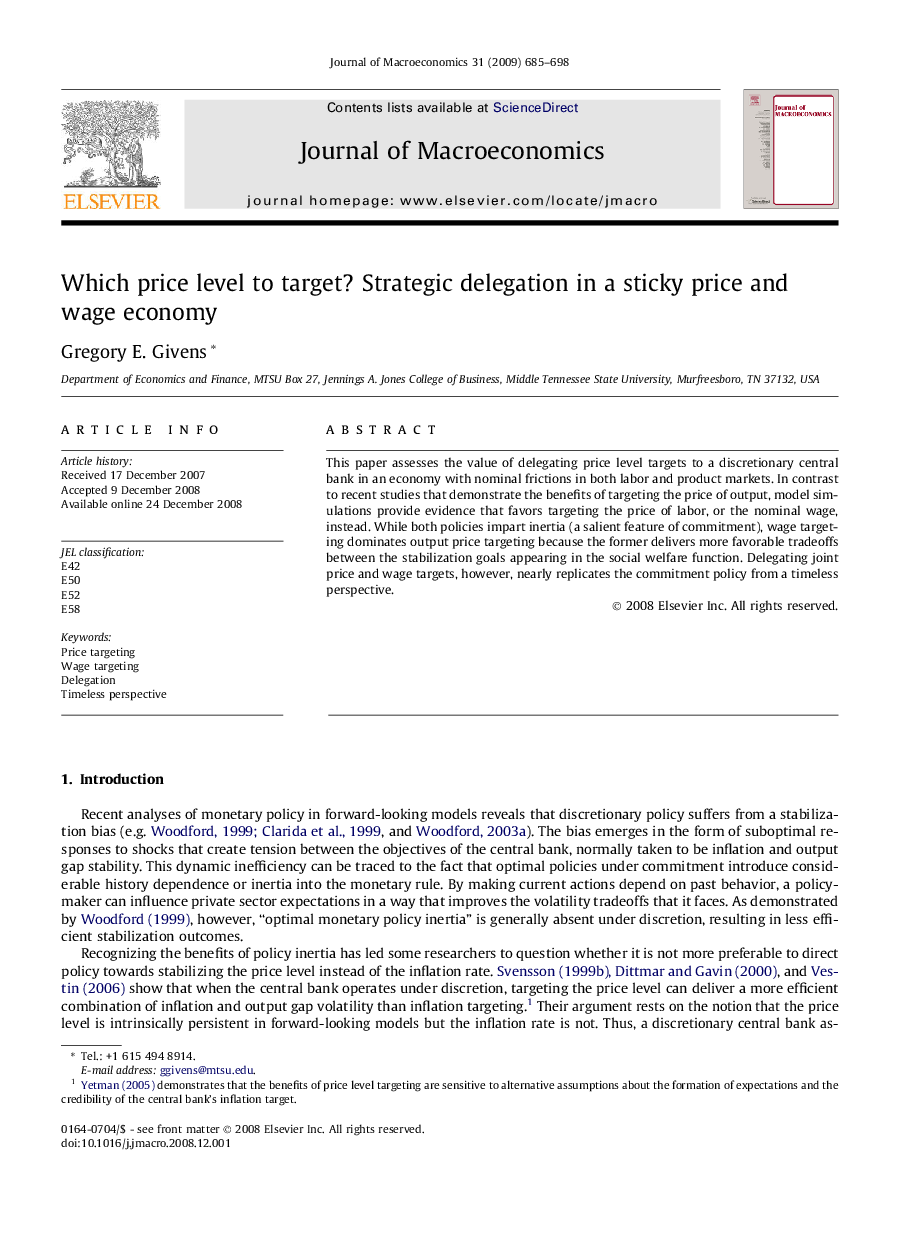| Article ID | Journal | Published Year | Pages | File Type |
|---|---|---|---|---|
| 965972 | Journal of Macroeconomics | 2009 | 14 Pages |
Abstract
This paper assesses the value of delegating price level targets to a discretionary central bank in an economy with nominal frictions in both labor and product markets. In contrast to recent studies that demonstrate the benefits of targeting the price of output, model simulations provide evidence that favors targeting the price of labor, or the nominal wage, instead. While both policies impart inertia (a salient feature of commitment), wage targeting dominates output price targeting because the former delivers more favorable tradeoffs between the stabilization goals appearing in the social welfare function. Delegating joint price and wage targets, however, nearly replicates the commitment policy from a timeless perspective.
Related Topics
Social Sciences and Humanities
Economics, Econometrics and Finance
Economics and Econometrics
Authors
Gregory E. Givens,
